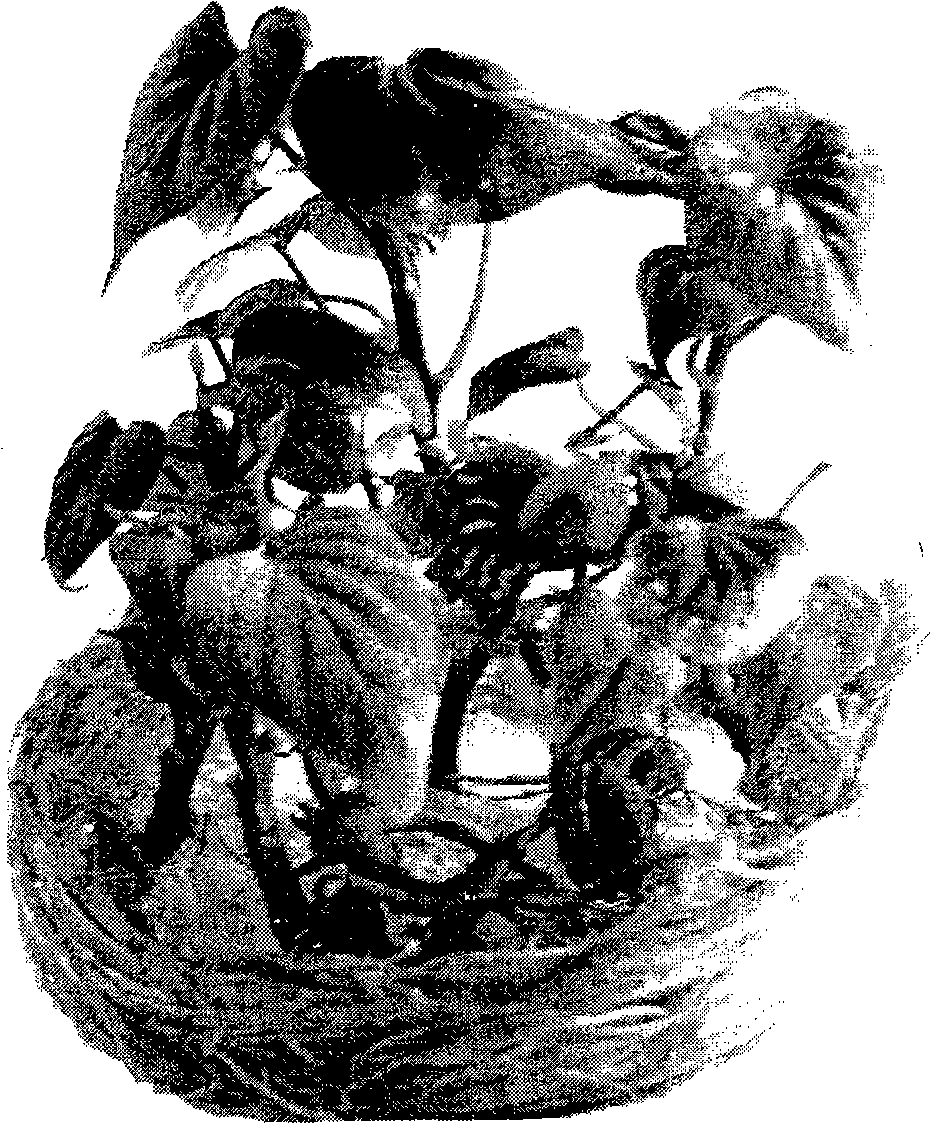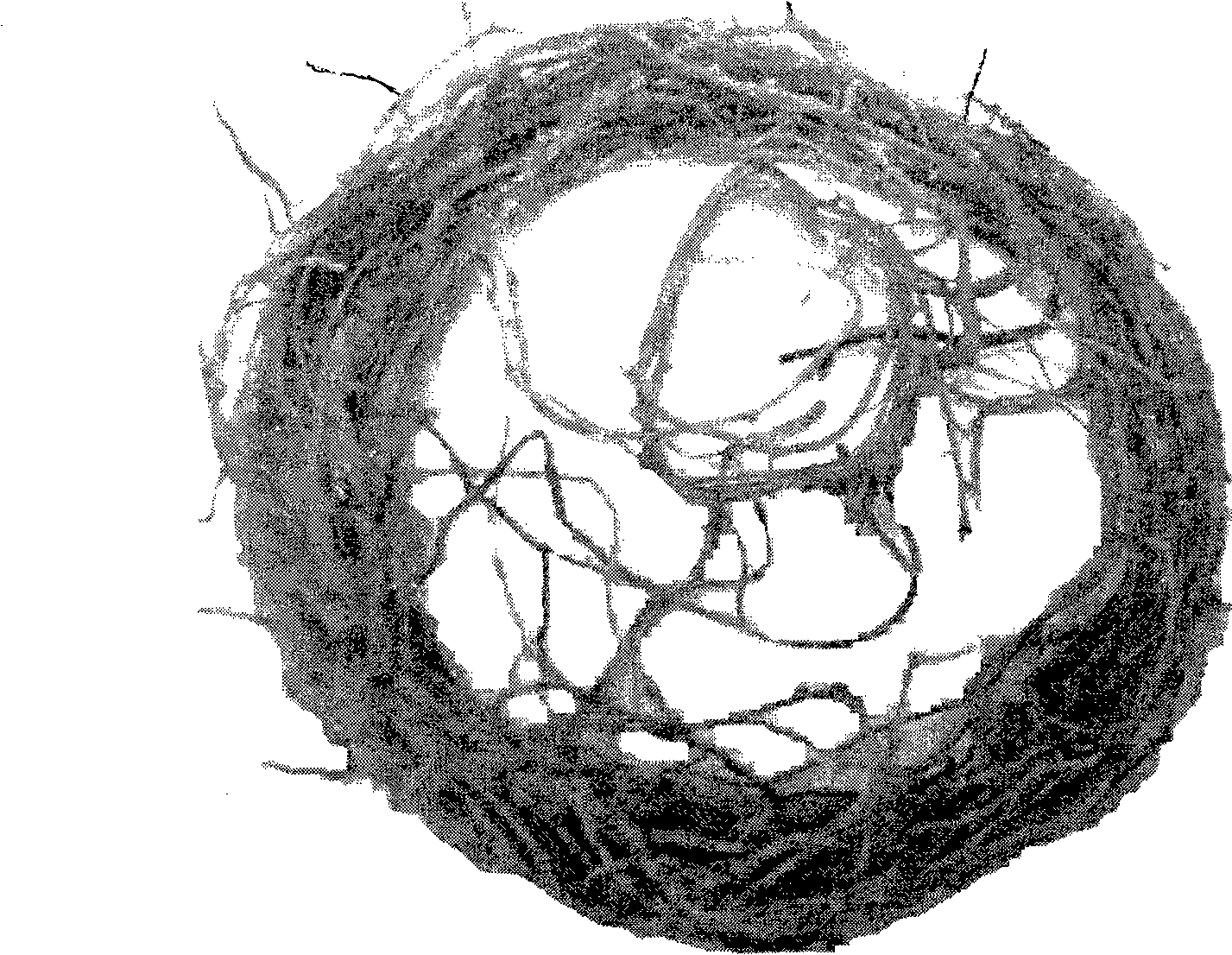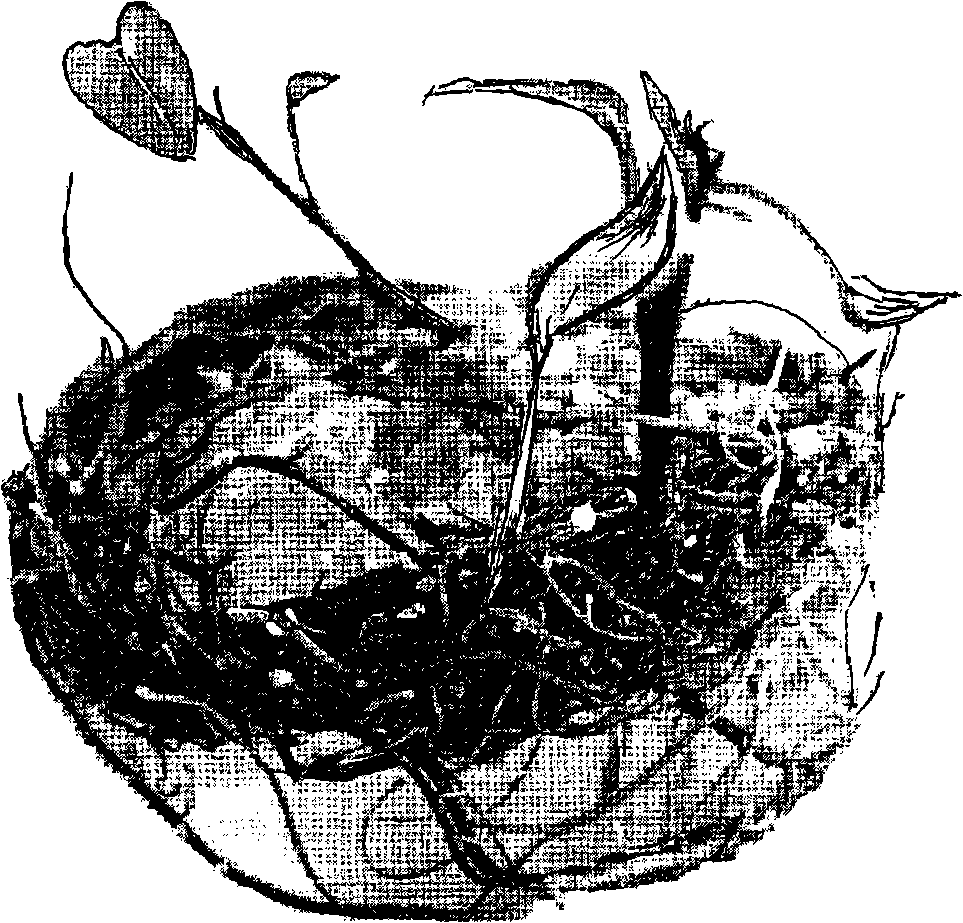Sweet-potato isolated culture adventitious-root germination method and use thereof
A technology for sweet potato and culturing substrate, applied in the field of botany, can solve the problems of low transformation efficiency, lack of genetic transformation system, inability to apply production and the like
- Summary
- Abstract
- Description
- Claims
- Application Information
AI Technical Summary
Problems solved by technology
Method used
Image
Examples
Embodiment 1
[0073] Embodiment 1 sweet potato adventitious root sprouting method
[0074] 1. Selection of sweet potato strains
[0075] The present inventor selected 32 sweet potato lines for adventitious root sprouting experiment, and the selected lines are listed in Table 1, and these lines are all routinely used in the art.
[0076] Table 1
[0077]
[0078] 2. Preparation of culture medium
[0079] The medium used is sweet potato tissue culture basal medium, the composition is MS basal medium plus 0.3mg / LVB1, and the sucrose concentration is increased to 30g / L. Among them, the formula of MS basic medium is: macroelement: 440mg / LCaCl 2 2H 2 O, 170mg / L KH 2 PO 4 , 1900mg / L KNO 3 , 370mg / L MgSO 4 ·7H 2 O, 1650mg / LNH 4 NO 3 ;Trace elements: 0.025mg / L CoCl 2 ·6H 2 O, 0.025mg / L CuSO 4 ·5H 2 O, 0.25mg / LNa 2 MoO 4 2H 2 O, 6.2 mg / L H 3 BO 3 , 0.83mg / L KI, 16.9mg / L MnSO 4 ·H 2 O, 8.6mg / LZnSO 4 ·7H 2 O; Iron salt: 37.25mg / L Na 2 EDTA, 27.85mg...
Embodiment 2
[0103] Germination comparison under different culture conditions of embodiment 2
[0104] Sushu No. 2 (B11) and Taishu No. 6 (B22) with good bud growth were selected as test objects to verify the bud growth under different culture conditions.
[0105] Culture Condition 1:
[0106] The cultivation method is the same as that in Example 1. After the root system is obtained, the root system is spread upside down on the fresh basic medium of sweet potato tissue culture.
[0107] Culture condition 2:
[0108] Other culture methods are the same as in Example 1, except: after obtaining the root system, the root system is tiled non-upside down (that is, according to the direction of the root system in the original culture bottle) on fresh sweet potato tissue culture basic medium.
[0109] 2 months after the root system was tiled to the fresh medium, it was observed whether buds appeared, and the number of buds produced on the root system was counted. The test results of Sushu No. 2 ...
Embodiment 3
[0115] Embodiment 3 prepares transgenic sweet potato plant
[0116] Using a conventional method, the expression vector pCAMBIA1301 (purchased from CAMBIA, with its own GUS gene) was introduced into competent Agrobacterium, and positive clones were screened to obtain the Agrobacterium into which the vector was introduced.
[0117] By the dipping method, the sweet potato explants were soaked with the Agrobacterium introduced with the vector, and some tissues were infected and the explants expressing the GUS gene (shown in blue) were as follows: Figure 5 shown. The cells infiltrated with Agrobacterium were screened by resistance selection, some of them were embryogenic cells (differentiable), and the embryogenic cells were placed on sweet potato tissue culture basic medium supplemented with 1 mg / L ABA, and cultured for about 1 month , transferred them to ABA-free sweet potato tissue culture minimal medium, and these embryogenic cells could gradually grow into roots.
[0118] W...
PUM
| Property | Measurement | Unit |
|---|---|---|
| diameter | aaaaa | aaaaa |
| length | aaaaa | aaaaa |
| diameter | aaaaa | aaaaa |
Abstract
Description
Claims
Application Information
 Login to View More
Login to View More - R&D
- Intellectual Property
- Life Sciences
- Materials
- Tech Scout
- Unparalleled Data Quality
- Higher Quality Content
- 60% Fewer Hallucinations
Browse by: Latest US Patents, China's latest patents, Technical Efficacy Thesaurus, Application Domain, Technology Topic, Popular Technical Reports.
© 2025 PatSnap. All rights reserved.Legal|Privacy policy|Modern Slavery Act Transparency Statement|Sitemap|About US| Contact US: help@patsnap.com



